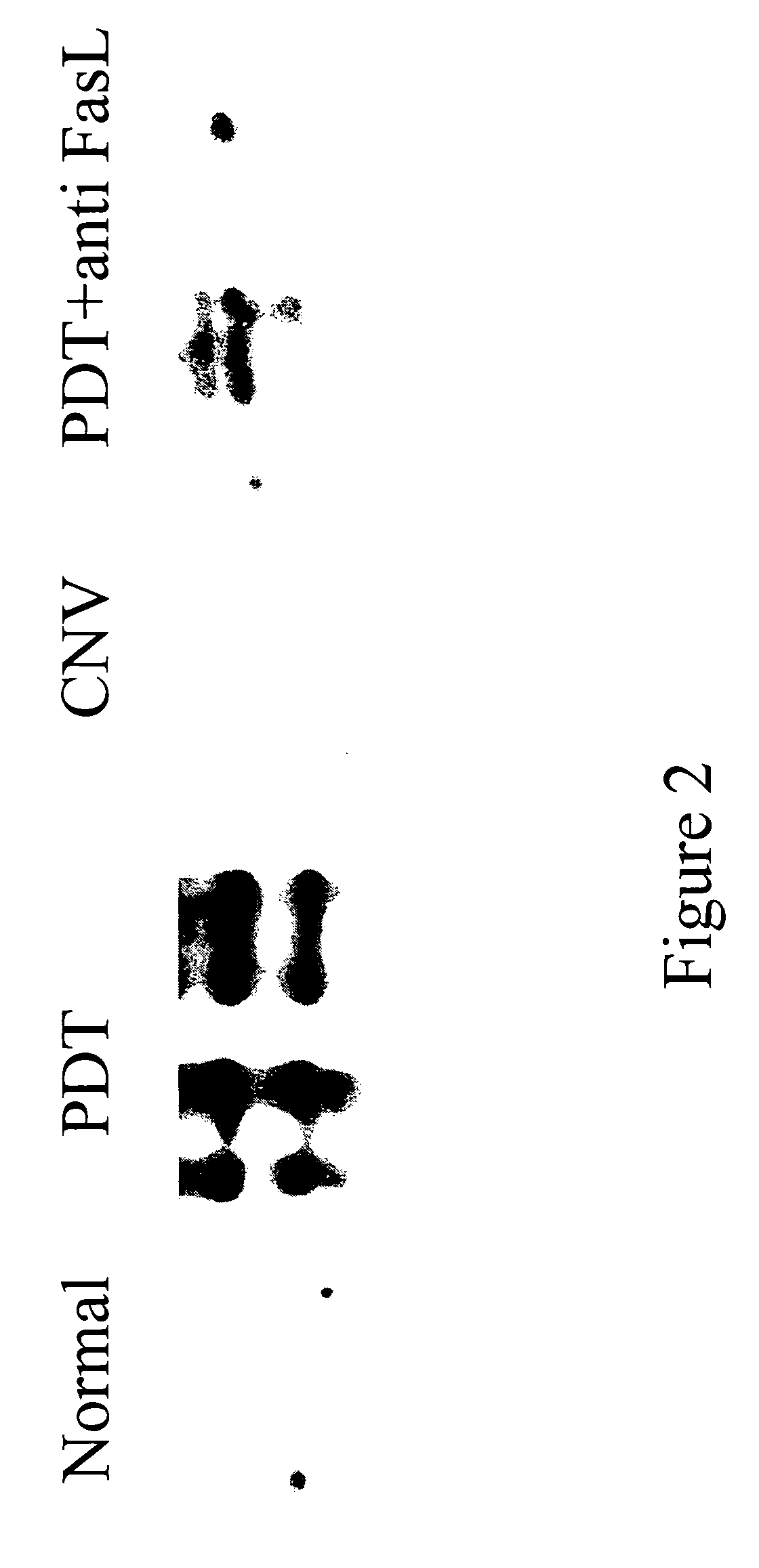Methods and compositions for treating conditions of the eye
a technology of eye conditions and compositions, applied in the field of photodynamics, can solve the problems of destroying the photoreceptor cells of the retina, affecting the treatment effect, and little understanding of the etiology and pathogenesis of the disease, so as to reduce or delay the recurrence of the condition, improve the selectivity of cnv, and improve the treatment
- Summary
- Abstract
- Description
- Claims
- Application Information
AI Technical Summary
Benefits of technology
Problems solved by technology
Method used
Image
Examples
example 1
Anti-FasL Factor Enhances PDT
[0080]PDT is an effective treatment for CNV but may require multiple treatments to limit vision loss. Preclinical studies have demonstrated damage to adjacent retinal structures which may accumulate with multiple treatments. The neuroprotective properties of an anti-FasL neutralizing antibody may offer neuroprotection and improve the effectiveness of PDT. To investigate the efficacy of PDT in combination with an anti-FasL neutralizing antibody in a laser injury model of CNV in the rat, the following experiment was undertaken.
Methods
Induction of Choroidal Neovascularization
[0081]Choroidal neovascular membranes were induced in Brown-Norway rats using an Argon / dye laser. Briefly, Brown-Norway rats (Charles River Laboratory, Wilmington, Mass.) were anesthetized via an intramuscular injection of 50 mg / kg of ketamine hydrochloride and 10 mg / kg of xylazine. Pupils were dilated with a topical application of 5% phenylephrine and 0.8% tropicamide. Six laser spots ...
PUM
| Property | Measurement | Unit |
|---|---|---|
| wavelengths | aaaaa | aaaaa |
| wavelengths | aaaaa | aaaaa |
| wavelengths | aaaaa | aaaaa |
Abstract
Description
Claims
Application Information
 Login to View More
Login to View More - R&D
- Intellectual Property
- Life Sciences
- Materials
- Tech Scout
- Unparalleled Data Quality
- Higher Quality Content
- 60% Fewer Hallucinations
Browse by: Latest US Patents, China's latest patents, Technical Efficacy Thesaurus, Application Domain, Technology Topic, Popular Technical Reports.
© 2025 PatSnap. All rights reserved.Legal|Privacy policy|Modern Slavery Act Transparency Statement|Sitemap|About US| Contact US: help@patsnap.com



